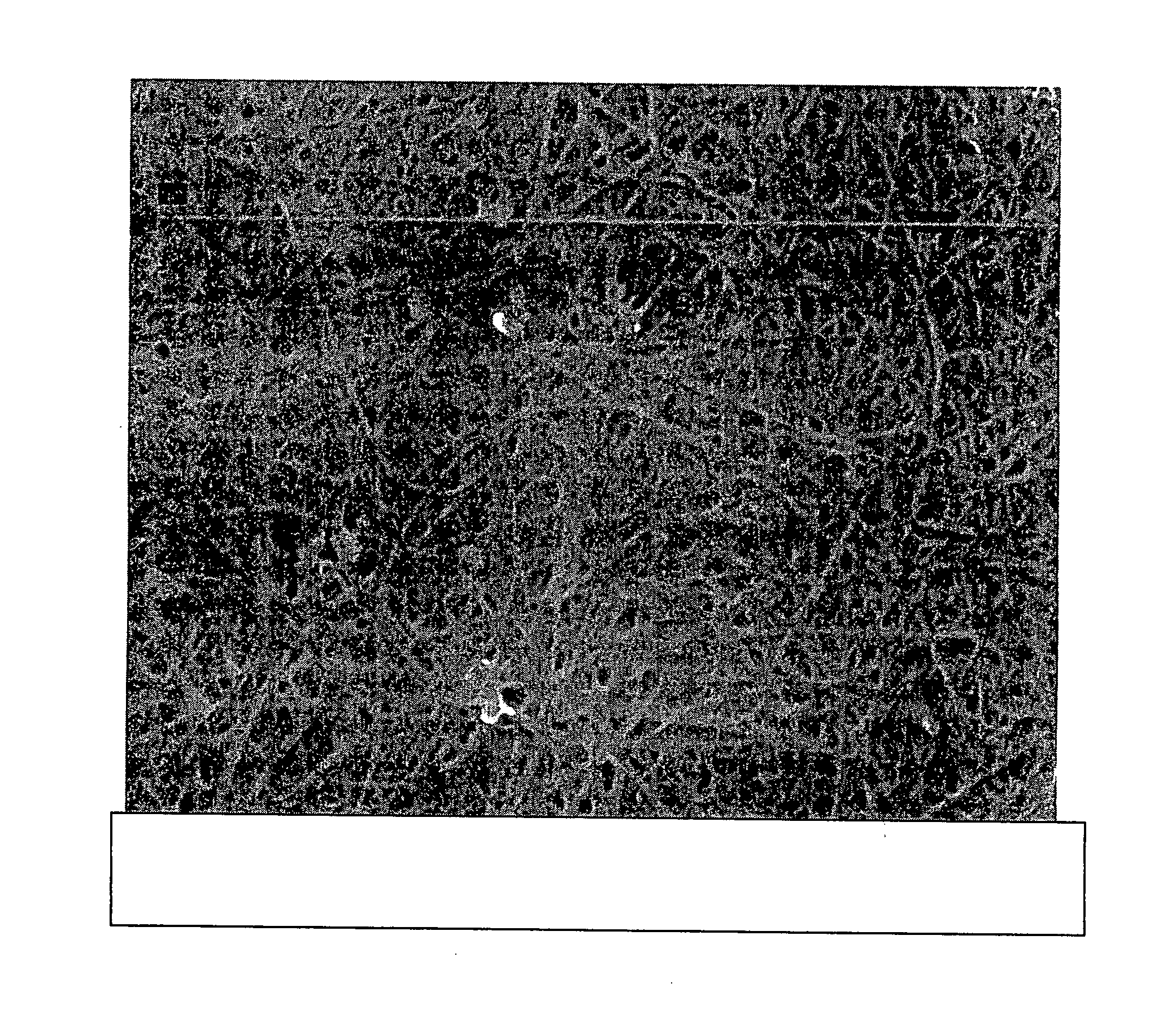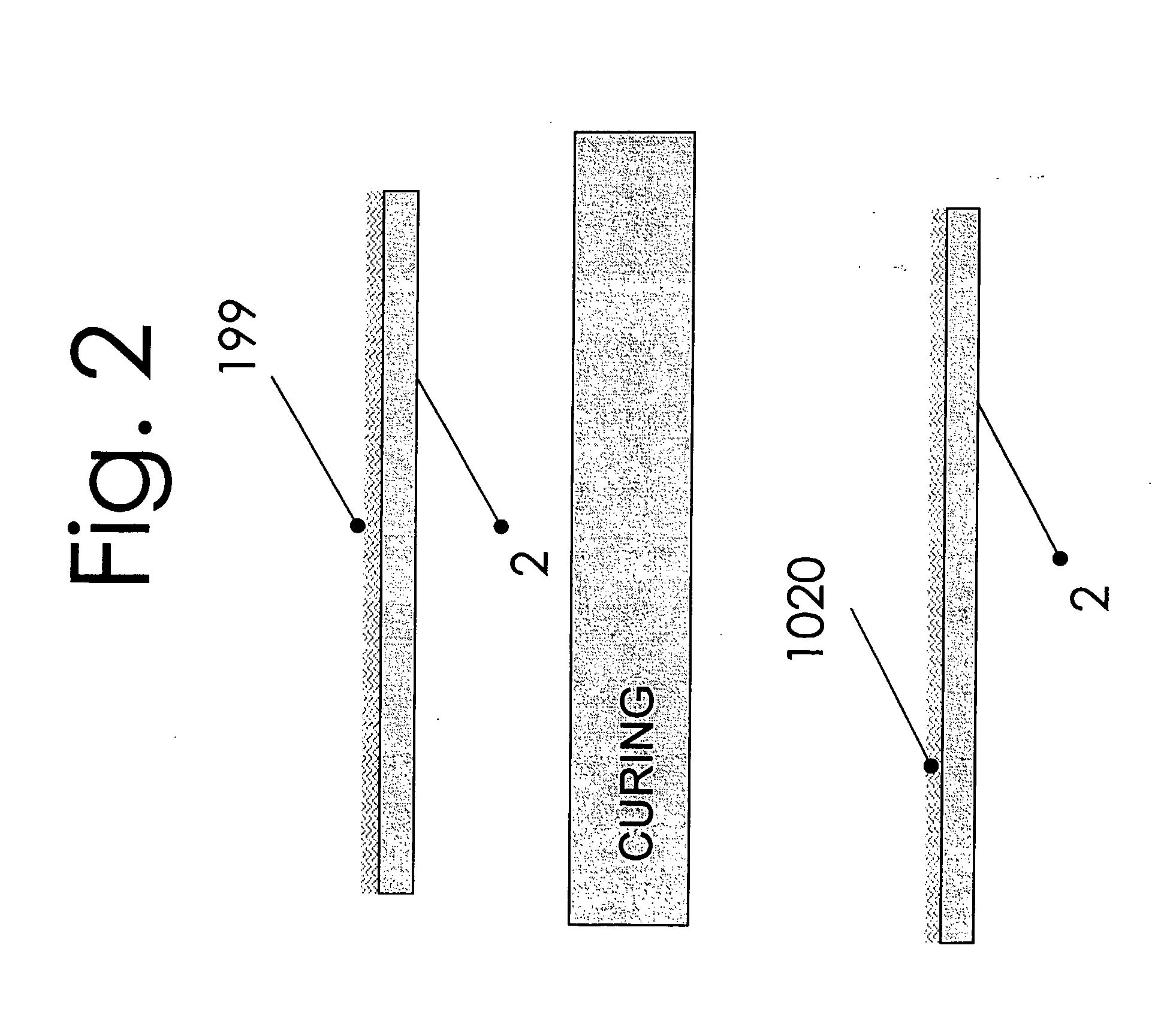Coatings Comprising Carbon Nanotubes
a technology of carbon nanotubes and coatings, applied in the direction of electrically conductive paints, nanoinformatics, semiconductor/solid-state device details, etc., can solve the problems of difficult application of dry process fabrication of electrically conductive coatings to continuous or large substrates, complicated apparatuses having vacuum systems, and inability to permit real-time marking of substrates. to achieve the effect of reducing discoloration and surface textur
- Summary
- Abstract
- Description
- Claims
- Application Information
AI Technical Summary
Benefits of technology
Problems solved by technology
Method used
Image
Examples
examples
[0080]FIG. 1 is a picture of carbon nanotube mat formed by curing.
[0081]FIG. 2 shows CNT inks or dispersion coated on Polyester. The conductive inks and coatings are formed by coating the conductive ink (199) on a flexible film (2). The ink can be formed from single-walled or multi walled nanotubes and may be formed from multiple layers or dispersions containing, carbon nanotubes, polymers, carbon nanotubes / antimony tin oxide, carbon nanotubes / platinum, or carbon nanotubes / silver or carbon nanotubes / silver-chloride. This forms conductive material (1020) when cured properly.
[0082]FIG. 3 shows a two part CNT ink or dispersion forming a conductive material of the invention. The coated carbon nanotubes layer 1005 is applied to the Polyester layer 2 and cured. The separate protective polymer coating 1010 is applied to cured carbon nanotube layer 1005 and Polyester (2) and then cured. The coated carbon nanotubes layer 1005 can be formed from one or more individual coating and curing ste...
PUM
| Property | Measurement | Unit |
|---|---|---|
| outer diameter | aaaaa | aaaaa |
| outer diameter | aaaaa | aaaaa |
| surface roughness | aaaaa | aaaaa |
Abstract
Description
Claims
Application Information
 Login to View More
Login to View More - R&D
- Intellectual Property
- Life Sciences
- Materials
- Tech Scout
- Unparalleled Data Quality
- Higher Quality Content
- 60% Fewer Hallucinations
Browse by: Latest US Patents, China's latest patents, Technical Efficacy Thesaurus, Application Domain, Technology Topic, Popular Technical Reports.
© 2025 PatSnap. All rights reserved.Legal|Privacy policy|Modern Slavery Act Transparency Statement|Sitemap|About US| Contact US: help@patsnap.com



